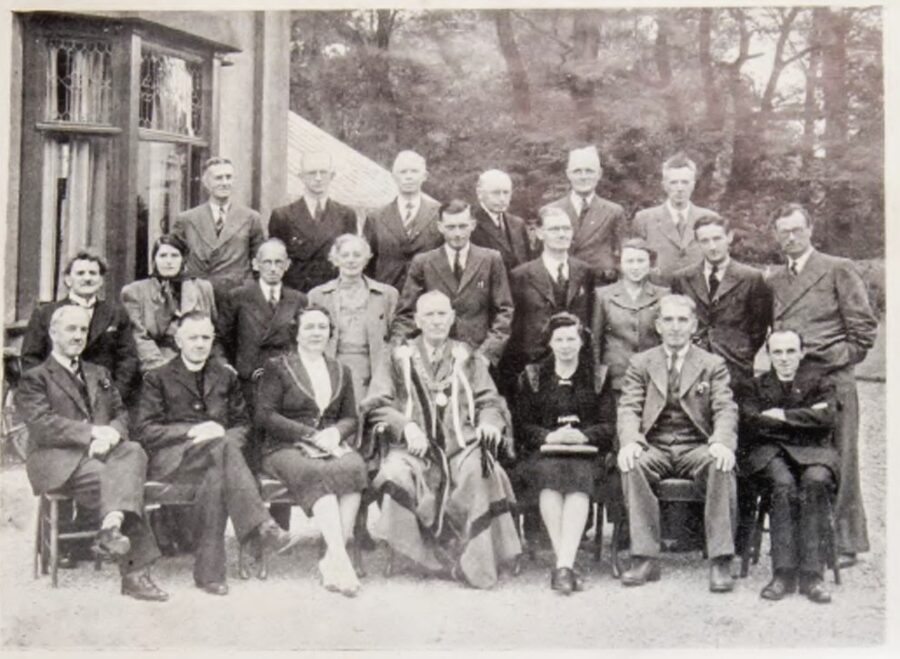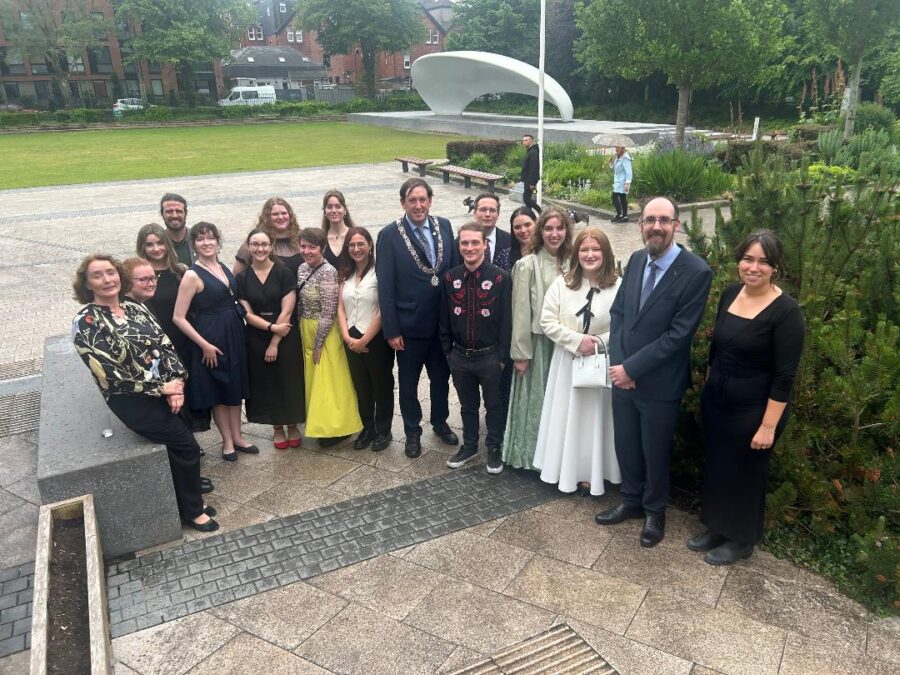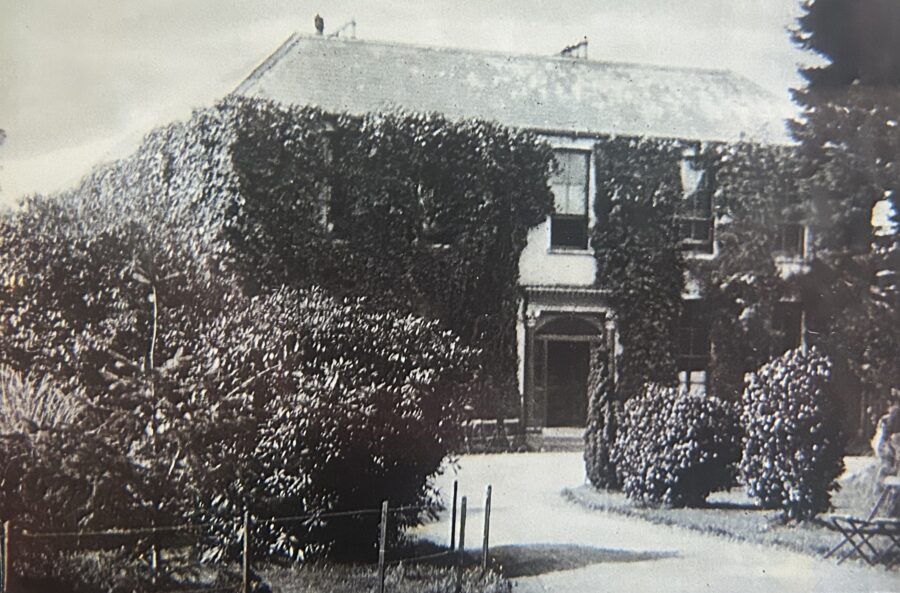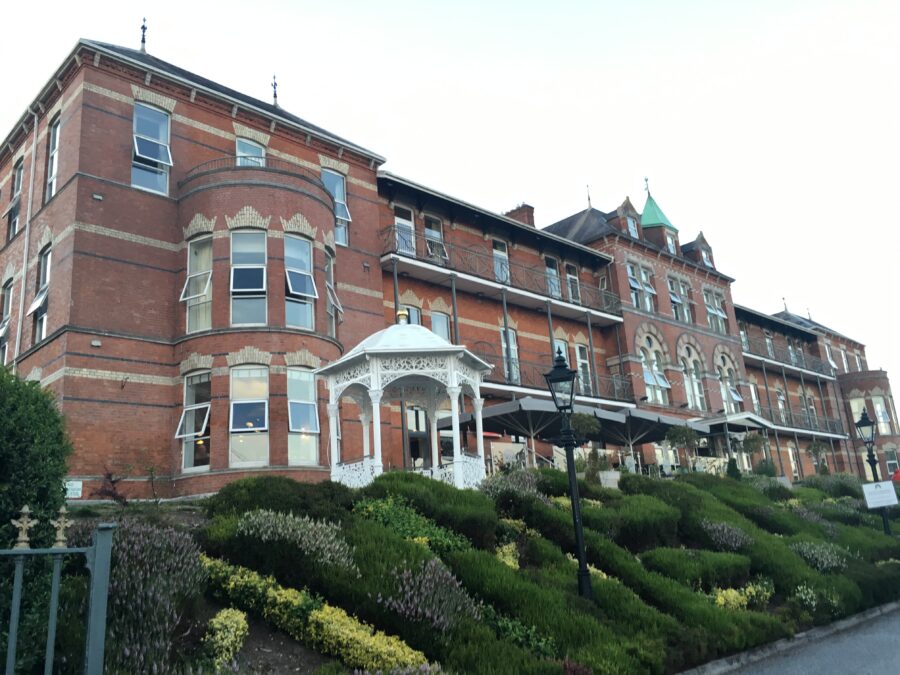
Kieran’s Our City, Our Town Article,
Cork Independent, 26 June 2025
Making an Irish Free State City – A Museum Committee is Formed
Continuing on from last week’s column, in April 1942, a number of citizens – not drawn from any one section of Cork’s community life – met informally to discuss the feasibility of establishing a permanent museum for the city and county. Meeting with the Lord Mayor and members of Cork Corporation led to a plan for the return of the former museum building in Fitzgerald’s Park to being a public museum.
A souvenir booklet survives in the archives of Cork Public Museum from 1945, the year the Museum was re-opened. It is edited by P J Harnett and he describes in detail the journey in reopening a public museum and the context of the committee being formed. The committee was initiated from a historical exhibition at 97 St Patrick’s Street. The topic focussed on the 1798-1921 period of Irish political history. The exhibition was held from 15 to 29 March 1942 and organised by Coiste na Gaedhilge – a committee from representatives of the several Irish language bodies. The exhibition premises was freely loaned for the occasion by Dr T M McGrath, Manager of the Cork Examiner. Thousands of people of all ages, classes and creeds daily came to the exhibition.
According to the 1945 souvenir booklet, the purpose of the display was to raise awareness within younger generations of “sacrifices made and to show them in some degree the noble purpose of the sacrifice and to rouse them to a realization of the fact that they have a duty towards the men who made that sacrifice”.
The booklet notes that during the fortnight that the exhibition was open the organising committee had appeals from lots of people from all walks of life that something be done towards helping to provide a permanent display to include not only political history but exhibits dealing with the arts and crafts, folklore, industry of the city. Mrs Jane Dowdall was particularly enthusiastic in getting a museum up and running. An t-Athair Tadhg Ó Murchadha, Jane Dowdall and P J Harnett discussed the possibility of obtaining a museum, municipal or otherwise. They decided to invite a cross section of the various interests concerned to attend a meeting to discuss the feasibility of the suggestion.
The 1945 souvenir booklet outlines that a meeting was held at the Imperial Hotel on 1 April 1942, a large number attending. Seán Ó Coindealbháin presided. P J Harnett acted as secretary and explained the aims of the meeting. After a very full discussion, the then Lord Mayor, Councillor John Horgan, proposed that a committee of four, comprising of the Chairman and Secretary of the meeting with Mr Michael V Conlon and Mr Michael Holland, be set up. They were to have “power to co-opt as many further members as would be helpful, to explore ways and means of providing a worthy museum for the citizens”.
The group consisted of men and women with diverse backgrounds and interests. From artists to archaeologists, politicians to clergymen, they were united in their passion for the history of Ireland. Meetings were held weekly in the Presentation College, which was placed at the disposal of the Committee by the Presentation Brothers through the good offices of Rev. Brother Austin.
The 1945 souvenir booklet lists the following individuals were co-opted to the Museum Committee. The interests of some individuals can be reconstructed: An t-Athair T Ó Murchadha, Rev. Brother Austin, Mrs Jane Dowdall, Mrs H Ryan, Miss Sheila Murphy, Miss Brigid G MacCarthy, Professor Ethna Byrne-Costigan (UCC, Romance Languages), Professor John Busteed (economics, Dean of Faculty of Commerce), Professor Michael A MacConaill (UCC, Anatomy), Professor Seán P Ó Riordáin (UCC, Archaeology), Professor Louis P Renouf (UCC, Zoology) & Messrs Seamus Murphy (sculptor), P J Hartnett, K Harty, S Hendrick, A O’Keeffe, Michael Holland, D W O’Brien, E R Rohu, Dr D P Fitzgerald, R Breathnach, Micheál Ó Cuill, Alderman Richard S Anthony and D J Ryan. Mr Michael V Conlon was elected Chairman.
At a time of limited opportunities for women, five played a prominent role on the museum committee. The driving force behind it was Jane Dowdall, who later became the first woman elected as Lord Mayor of Cork. Another member, Sheila Murphy, later became the first woman to be president of the Cork Historical and Archaeological Society.
The 1945 souvenir booklet highlights that the first problem, which confronted the new Committee, was the provision of a suitable building to house the exhibits. It was ultimately decided to request Philip Monahan, the City Manager, to put the old museum building in Fitzgerald’s Park into a proper state of repair with a view to having it fitted up as a museum. After a certain amount of negotiation, in which Lord Mayor Alderman Richard Anthony took a leading part, the Corporation passed a sum of money to be expended on repairing and altering the building in accordance with plans, which were drawn up by the City Engineer after consultation with representatives of the Museum Committee.
During this time also, the other representatives of the Committee set about collecting money to help defray the capital expenditure necessary for equipment. In all they got promises of almost £1,000. Subsequently Cork Corporation, Cork County Council and University College Cork were appealed to for financial aid. The Corporation levied a rate of one penny in the pound, the County Council gave an annual grant in aid of £100, and University College offered to pay a curator’s salary of £350 per annum.
The 1945 souvenir booklet further describes that the next difficulty was the provision of a statutory body with powers to control the working of a museum. It was known that the Corporation annually funded University Extension Lectures at University College. The grant scheme was operated by a body composed of representatives of the Governing Body of the College and of the Corporation.
Subsequently, the Governing Body of the College was asked to take over the management of the proposed museum and to accept the co-operation of the existing Committee in an executive or advisory capacity.
The Governing Body of the College acceded to the Committee’s request and gave the President of the College full power to take over the museum house in Fitzgerald’s Park from the Corporation, to lend necessary equipment and exhibits from the College, and to provide for the opening of the museum to the public.
After three years diligent voluntary work by the Committee with support from UCC and Cork Corporation, the museum re-opened in Fitzgerald Park in 1945.
To be continued…
Cork Public Museum celebrates its 80th anniversary with the exhibition 1945 Uncorked: The Founding of Cork Public Museum. This exhibition opens to the public on 30 May and runs until Spring 2026.
Kieran’s historical walking tours for July 2025 (all free, 2 hours, no booking required)
Sunday 13 July 2025, Views from a Park – The Black Ash and Tramore Valley Park historical walking tour; meet at Half Moon Lane gate, 1pm.
Wednesday 16 July 2025, Cork Through the Ages, An Introduction to the Historical Development of Cork City; meet at the National Monument, Grand Parade, 6.30pm.
Thursday 17 July 2025, Sunday’s Well historical walking tour; discover the original well and the eighteenth century origins of the suburb, meet at St Vincent’s Bridge, North Mall end, 6.30pm.
Caption:
1310a. Cork Public Museum Committee 1945 (source: Cork Public Museum).


